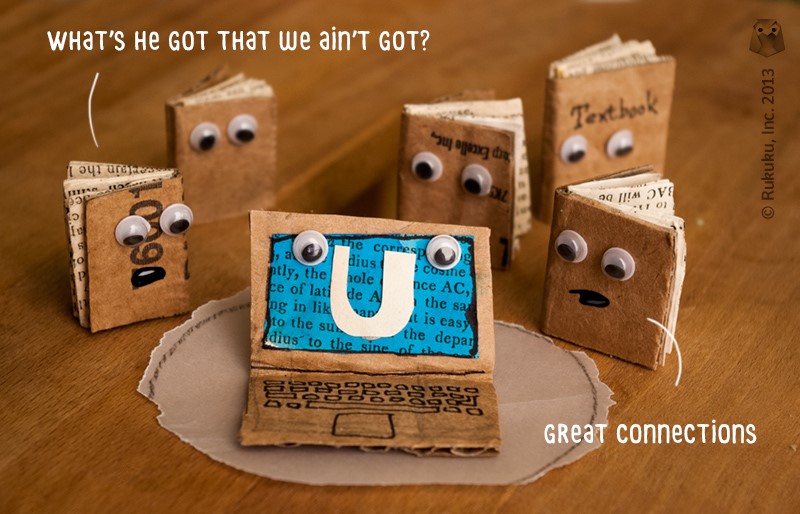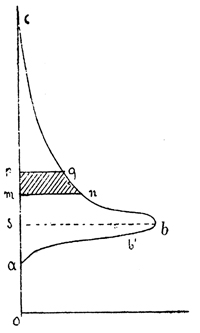Category Archives: Technology in education
Factors to consider with online study
Education in Debt: Part Three
With costs soaring and debts deepening, many students, universities, and lovers of learning are turning to online and blended programs that reduce or eliminate physical class time. Georgia Tech, for example, recently rolled out an online computer science master’s program incorporating large scale lectures, smaller online discussions, and individual assignments. The program costs less than half of the price of its on-campus master’s degree. Until college fees come down, or even if they do, we will probably see more and more of these hybrid programs. In fact, Rukuku hopes that we can host many of them here.
Beyond the move to online learning environments, greater accountability will help. Writing on behalf of the non-profit think tank Educational Sector, Andrew Gillen recommends that the Department of Education provide information pairing graduation rates and student loan default rates at colleges and universities. In this way, students can make better informed decisions. And for their part, students need to pay more attention to graduation rates and average debt loads for graduates at perspective universities. Some of President Obama’s recent proposals on higher education relate to this accountability issue, and we will discuss those in our next post.
Overall, more universities should realize that the music may soon stop on this higher education game, and less expensive-online competitors are quickly filling the seats behind them. The US is known worldwide for the quality of education provided at its universities. The costs are also well-known and sadly becoming the more prominent feature. With the internet greatly expanding the avenues for education, some universities may find they’ve priced themselves out of the market.
Class Dismissed

Is it time to question the traditional, expensive education models? Does education need to equate to decades of debt? Could education be acquired outside universities?
Throughout history, or at least the part I know about, students have sat through class, impatiently waiting for a bell to ring, a clock to tick enough ticks, enough sand to run through the hourglass, a teacher to utter the words, class dismissed. Well, that waiting may be over for good, at least for some university students.
On Monday, the US Department of Education approved Capella University’s FlexPath programs for bachelors and masters degrees. FlexPath allows students to get credit for classes by performing well on competency examinations, with no requirements on class attendance. In other words, as long as students can prove they have the knowledge, they can get credit for the class.
This is the first accredited program in the country to make such an offer. The implications are profound and affect several types of students. First, older students, who may have more experience in their particular field, can avoid spending time in classes on topics about which they are already familiar.
Second, bright, motivated students will also benefit. The Doogie Howsers of the world no longer need to sit through classes covering material that they already understand or could understand very easily by studying on their own. In such a competency-based program, these students could easily pass through lower level classes at a much more rapid pace than your average student.
Finally, and most importantly, this program will drive down prices. Universities can hardly justify their astronomically high fees when students work through material at their own pace, at home, with professors offering support but not serving as the centerpiece of the course. The university’s responsibility is as much evaluation as direct teaching.
We talk a lot in this blog about disruptive technologies, and thus far, computers and the internet have only had minimal effects on education, at least when compared to industries such as travel, music, and consumer retail. To see an example, just pass by your local bookstore, or at least the spot where it used to be.
The awarding of credits has complicated the transformation of education through technology. Students need personalized evaluations from their professors, gauging their participation in class and performance on homework as well as exams. Professors can only work with so many students, and their time is not cheap.
Shifting to a competency-based system of evaluation for credit opens many opportunities for students that have learned their skills through less traditional means, including non-credit online courses. For the universities, it offers opportunities to reduce costs. It also puts pressure on them to improve the value of their students’ experiences, in and out of the classroom.
I went to a four-year college and had an excellent time. I made many friends and gained much, not only from my time inside class but my time outside of class as well. With tuition prices soaring, however, today’s students are questioning whether those experiences are worth decades of student debt payments. It is an important question, and universities will increasingly have to provide a satisfactory response.
Why computers have failed to revolutionize the classroom
In the past two decades, US schools alone have spent over $60 billion on computers. In 1981, there was 1 computer per 125 students. In 2000 there was a computer for every 5 students. This data only reflects what schools have provided and does not take into account the fact that students can bring their laptops and tablet computers to school, i.e. we can safely conclude that on average, US schools are well equipped with personal computers.
In other industries outside the education sector such concentration of computers would have led to a partial or complete disruption of how things are done: take banking, publishing, or movie-making as examples. Education, however, remains undisrupted.
My view is that the main reason for this phenomenon is that computers are used to sustain the traditional education model. At best, they are used as an activity center in class, ultimately adding to the cost of providing education. However, in order to disrupt education, connected computers need to be the center of all activity. We believe that Rukuku.com will be a step in that direction.
Power Law at Play in Interface Design
Rukuku design work is progressing full steam. In the process, we have discovered that interface design can be driven by the Power Law.
In early 20th century Vilfredo Pareto noticed a particular quality about incomes—in different towns around Europe, across many centuries, regardless of political systems, geographical location or anything else, incomes were distributed on a curve:
The graph illustrates that roughly 80% of wealth belongs to about 20% of people. And the remaining 80% of people collectively own the remaining 20% of societal wealth. This 80/20 rule magically works in many areas of life.
We discovered that when people post pictures and attach tags to them, 80% of pictures have fewer than 10 tags. Furthermore, any type of tagging activity on the web seems to follow the Pareto Law and 10 tags is the tagging capacity that should satisfy most of the users.
We concluded that if there is a need to limit the number of tags that a user can make in a software interface, most of the people will be satisfied with about a dozen.




